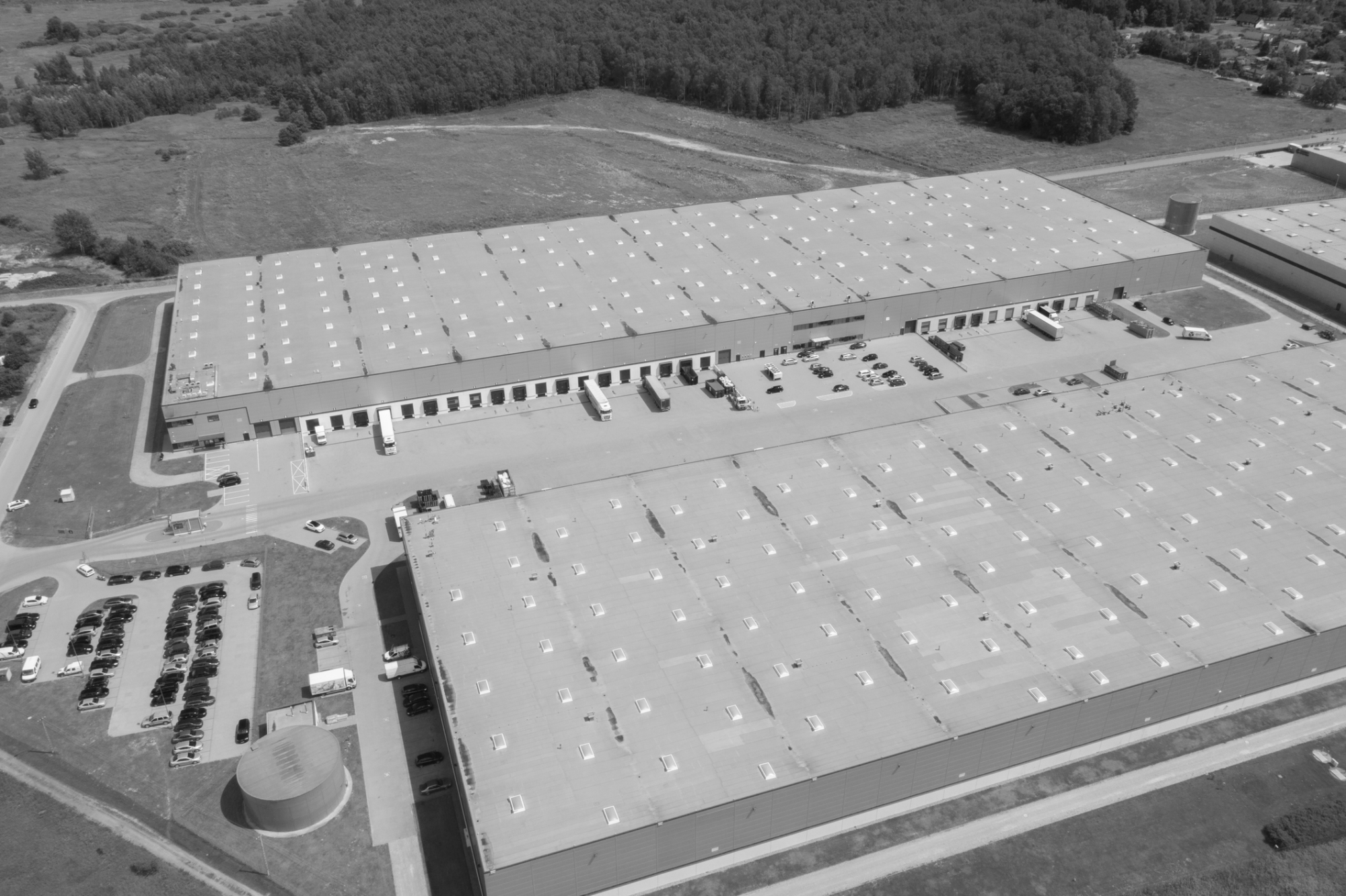In the increasingly global and complex world of supply chain management, third-party logistics providers (3PLs) and fourth-party logistics providers (4PLs) have become pivotal players. These entities help businesses manage the flow of goods, streamline operations, and enhance supply chain efficiency. In today’s interconnected economy, the role of 3PLs and 4PLs is evolving rapidly, driven by the rise of e-commerce, globalization, technological innovation, and the need for more flexible, resilient supply chains.
This article explores the definitions of 3PLs and 4PLs, their historical development, how they’ve evolved over time, and the critical roles they play in today’s supply chain networks. It is important to note that you can outsource operations to a 3PL or 4PL; however, you cannot outsource oversight responsibilities.
Defining 3PLs and 4PLs
Third-party logistics (3PL) providers offer outsourced logistics services to businesses. These include managing various supply chain elements, such as transportation, warehousing, inventory management, and order fulfillment. Essentially, a 3PL becomes an intermediary between the company and its customers by handling logistics operations that the company either cannot or chooses not to manage internally.
On the other hand, fourth-party logistics (4PL) providers go beyond the services offered by 3PLs. A 4PL acts as an integrator, overseeing the entire supply chain and managing multiple 3PLs and other logistics providers. A 4PL takes on a more strategic role by managing logistics and integrating information systems, coordinating services across the supply chain, and providing complete end-to-end solutions.
The critical difference between 3PLs and 4PLs lies in their scope and level of integration. While 3PLs provide a specific set of operational services, 4PLs manage the entire logistics process on behalf of the company, often designing, implementing, and optimizing the supply chain network.
A Brief History of 3PLs and 4PLs

Third-party logistics (3PL) originated in the mid-20th century when companies began outsourcing certain logistical functions, such as transportation and warehousing, to specialized service providers. Before this, businesses traditionally handled all logistics in-house, managing their fleets of trucks, storage facilities, and distribution centers.
The growth of globalization in the 1970s and 1980s further accelerated the demand for logistics outsourcing as businesses expanded their reach into new markets and sought more efficient ways to manage the increasingly complex task of moving goods across borders. During this period, transportation companies began offering integrated logistics services, evolving into what we now recognize as 3PLs. These firms provide transportation, warehousing, and distribution services under one umbrella, allowing businesses to streamline operations, reduce costs, and focus on their core competencies.
By the 1990s, the rise of the internet and e-commerce led to a more interconnected world, and supply chains became even more complex. Companies needed to manage global networks of suppliers, manufacturers, and retailers, leading to a greater reliance on 3PLs to manage everything from freight forwarding to cross-docking to order fulfillment.
The fourth-party logistics provider (4PL) concept emerged as supply chains grew more sophisticated. First introduced in the late 1990s, 4PLs were designed to act as a single point of contact for managing all aspects of the supply chain, often including coordinating multiple 3PLs and other service providers. 4PLs offered a more strategic and integrative approach, optimizing the logistics process rather than simply executing specific tasks.
While 3PLs offered operational efficiency, 4PLs emerged as a way for companies to outsource the design and management of the supply chain, providing a higher level of oversight, integration, and analytics. This evolution was driven by the need for businesses to adapt to the increasing complexity of global trade, technological advancements, and the shift toward leaner, more responsive supply chains.
The Evolution of 3PLs and 4PLs
Technological advancements, the explosive growth of e-commerce, and businesses expanding globally contributed to the evolution of 3PLs and 4PLs.
Technological Advancements
Technological advancement is one of the most significant drivers in the evolution of 3PLs and 4PLs. As supply chains have digitized, the logistics industry has had to adapt to new technologies that provide greater visibility, efficiency, and control over operations. Adopting technologies like transportation management systems (TMS), warehouse management systems (WMS), real-time tracking, and big data analytics has revolutionized how 3PLs and 4PLs operate.
For 3PLs, technology has enabled more efficient transportation routes, real-time tracking of shipments, and improved warehouse automation. This has led to faster delivery times, lower transportation costs, and better inventory management. Advanced WMS software allows 3PLs to provide more sophisticated fulfillment services, including handling high-volume e-commerce orders and managing multi-channel distribution.
Technology has further enhanced 4PLs’ ability to manage the entire supply chain ecosystem. Integrating data analytics, artificial intelligence (AI), and Internet of Things (IoT) solutions allow 4PLs to optimize the whole supply chain by predicting demand fluctuations, analyzing cost-saving opportunities, and identifying potential disruptions before they occur. This proactive, data-driven decision-making has transformed 4PLs into vital strategic partners for businesses looking to optimize global operations.
E-commerce and Omnichannel Retail
The explosive growth of e-commerce has reshaped the logistics industry, with consumers demanding faster, more reliable delivery services. As online retail expanded, both 3PLs and 4PLs were forced to adapt to a new environment characterized by smaller, more frequent shipments, tighter delivery windows, and the need for multi-channel fulfillment.
For 3PLs, this meant a shift toward more agile and scalable fulfillment operations. Traditional warehouse models, designed to handle bulk shipments to retailers, had to evolve to accommodate direct-to-consumer shipping. Many 3PLs have since developed advanced e-commerce fulfillment capabilities, including same-day or next-day delivery, automated picking and packing, and returns management.
Meanwhile, 4PLs have become increasingly valuable to companies trying to manage the complexity of omnichannel retail. In an omnichannel world, businesses must manage inventory across multiple sales channels, whether physical stores, online marketplaces, or direct-to-consumer platforms. 4PLs play a critical role in integrating these channels and optimizing the flow of goods across them. By managing multiple 3PLs, carriers, and suppliers, 4PLs can ensure a seamless fulfillment experience for customers regardless of where or how they make their purchases.
Globalization and Supply Chain Complexity
As businesses expanded globally, supply chains became more complex, involving multiple regions, partners, and compliance requirements. This complexity created both challenges and opportunities for 3PLs and 4PLs.
3PLs responded to this growing complexity by expanding their services beyond basic transportation and warehousing. Many now offer value-added services like customs brokerage, freight forwarding, reverse logistics, and supply chain consulting. These services are critical for companies navigating global trade’s regulatory, financial, and logistical challenges.
By contrast, 4PLs emerged as strategic partners in helping companies manage this complexity. By integrating data from multiple suppliers, carriers, and 3PLs, 4PLs provide visibility into the entire supply chain. This allows businesses to make informed decisions about sourcing, production, inventory management, and distribution on a global scale. With 4PLs providing end-to-end oversight, companies can optimize their entire supply chain network, reduce costs, and improve delivery performance.
The Role of 3PLs in Today’s Supply Chain
Besides the ability to scale logistic operations quickly and efficiently, cost savings and the ability to focus on core business activities all play a role in 3PLs in today’s supply chain.

Operational Efficiency and Scalability
One of the primary benefits of using a 3PL is the ability to scale logistics operations efficiently. Whether a company experiences seasonal demand fluctuations, is entering new markets, or is growing rapidly, a 3PL can provide the necessary infrastructure to handle increased volumes. Businesses can quickly scale their operations without investing in their logistics infrastructure by leveraging a 3PL network of warehouses, transportation fleets, and technology.
In addition to scalability, 3PLs offer operational efficiency. With specialized expertise in logistics management, 3PLs can optimize transportation routes, reduce lead times, and improve warehouse management processes. This allows businesses to focus on their core competencies, such as product development and marketing, while leaving the complexities of logistics to the experts.
Cost Savings
Outsourcing logistics to a 3PL can lead to significant cost savings for many businesses. By using the 3PL’s existing infrastructure and technology, companies can avoid the high capital expenditures associated with building and maintaining their own warehouses, fleets, and logistics systems. Additionally, 3PLs have greater purchasing power with carriers and suppliers, allowing them to negotiate lower transportation and logistics service rates.
3PLs also help reduce costs by optimizing supply chain operations. For example, a 3PL can use its route planning and load optimization expertise to reduce fuel consumption, minimize idle time, and eliminate unnecessary transportation costs. In warehousing, 3PLs can implement advanced automation and inventory management systems to reduce labor costs and improve efficiency.
Focus on Core Business
By outsourcing logistics to a 3PL, companies can focus on their core business activities without being bogged down by the complexities of supply chain management. This allows businesses to allocate more resources to product development, marketing, and customer service while the 3PL handles the logistics operations. This division of labor is particularly beneficial for smaller companies or those experiencing rapid growth, as it allows them to remain agile and competitive in the marketplace.
The Role of 4PLs in Today’s Supply Chain

Managing the supply chain from start to finish is just one of the roles 4PLs play today. Strategic oversight, optimization, risk management, and resilience are crucial elements.
End-to-End Supply Chain Management
One key advantage of working with a 4PL is managing the entire supply chain from start to finish. A 4PL acts as a single point of contact, coordinating multiple 3PLs, carriers, suppliers, and other logistics providers to ensure a seamless flow of goods from raw material sourcing to final delivery.
By integrating data from multiple sources, 4PLs provide complete visibility into the supply chain. This allows businesses to monitor inventory levels, track shipments, and anticipate potential disruptions. In addition, 4PLs use data analytics to identify opportunities for cost savings, reduce lead times, and improve delivery performance.
Strategic Oversight and Optimization
Unlike 3PLs, which focus on specific logistics functions, 4PLs optimize the entire supply chain network more strategically. This includes designing and implementing supply chain solutions tailored to business needs. A 4PL might work with a company to optimize its transportation network or reduce inventory levels to improve efficiency.
In addition to providing operational oversight, 4PLs often offer advisory services. These include helping businesses navigate the challenges of globalization, such as complying with international trade regulations, managing tariffs, and minimizing risks associated with cross-border shipping.
Risk Management and Resilience
One of the growing responsibilities of 4PLs is helping companies manage risk and build resilience in their supply chains. As supply chains become more global and interconnected, they are more vulnerable to disruptions, such as natural disasters, geopolitical instability, and pandemics.
4PLs use advanced risk management strategies, including predictive analytics, to identify potential risks and develop contingency plans. By proactively managing risks, 4PLs help businesses maintain continuity of operations even in the face of disruptions. This has become increasingly important in the wake of the COVID-19 pandemic, which exposed vulnerabilities in global supply chains and underscored the need for greater resilience.
In today’s fast-paced and globalized economy, 3PLs and 4PLs are essential in optimizing supply chains, improving efficiency, and enabling companies to scale their logistics operations. While 3PLs provide operational expertise in transportation, warehousing, and order fulfillment, 4PLs take a more strategic role by overseeing the entire supply chain and integrating multiple logistics providers. Both 3PLs and 4PLs are critical partners for businesses seeking to navigate the complexities of modern supply chains, reduce costs, and improve customer service.
As supply chains continue to evolve, driven by technological advances, the growth of e-commerce, and the need for more resilient operations, the roles of 3PLs and 4PLs will only become more important. Whether it’s through improving operational efficiency, providing strategic oversight, or managing global logistics networks, 3PLs and 4PLs are set to remain indispensable players in the future of supply chain management.
OPSdesign Consulting provides supply chain strategy assistance and builds computer models to determine the optimal number of distribution centers, their locations, the inventory to be housed, and the customers to serve. Additionally, we perform comparative analyses between company-run and 3PL/4PL alternatives.


